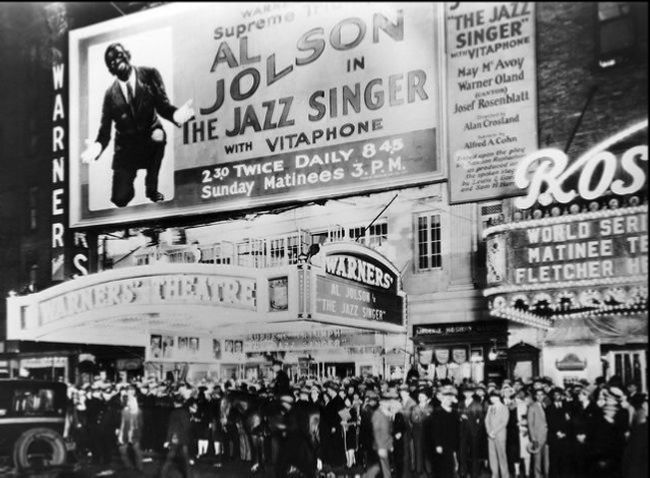hamfat/hamfatter
 photo credit: "Prima newyorkese di The Jazz Singer" by Breve Storia del Cinema (CC0 1.0)
photo credit: "Prima newyorkese di The Jazz Singer" by Breve Storia del Cinema (CC0 1.0) Definition: (noun) an actor or jazz musician with mediocre skills
Example: Mr. Beadle was looking for an excellent actress to star in Babe Three: Pig in Love, but everyone who turned up for the audition was a hamfat.
Quote:
"As I got off the train a newsie [newspaper seller] spotted me. 'What do you think of that hamfat?’ he yelled to his companion, 'One hundred thousand bucks a year, and he looks like a tramp.'"
Most of my readers know that a "ham" is a bad actor, but you might not be familiar with the unusual history of the word. In an 1883 New York Times column, "Uncle Rufus" explains that hamfatter comes from a song called "The Ham-Fat Man," and gives some of the lyrics:
"Good ebenin', while I’s gwine to please yo'all
I'se come from ole Virginny, ragged, sassy, fat, and 'tall.
Yo' may talk aboue yo' comfort, but ole Massa am de man!
A' hoochee, koochee, koochee! I'm de ham-fat man."
My American readers may not know this particular song, but they will no doubt recognize the style. "The Ham-fat Man" is a song from a minstrel show—that strange and offensive brand of "entertainment" in which white performers played caricatures of African Americans and sang songs that were supposed to represent the culture of slaves. To change their appearance, they covered their faces in makeup made of burnt cork mixed with (presumably ham) fat, called blackface.
Uncle Rufus says that the word hamfatter "has been in use for nearly 20 years as an expression of contempt for other actors they may happen to regard as possessing no good professional qualities, and who ought therefore be relegated from the dramatic stage to the domain of negro minstelry." However, the performance style was already prevalent 50 years before that, and these shows were not just popular with US audiences; a group called the Virginia Minstrels made a successful UK tour in the 1840s.
The tradition continued long after the Civil War. One of the most notable examples of this was Al Jolson singing the song "Mammy" in the early sound picture The Jazz Singer (1927), though blackface performances (and variations, such as the radio show Amos and Andy) were popular for decades afterward. Today, the word has largely disappeared, though Hamfatter is the name of a UK pop group--apparently a self-deprecating comment on their abilities.



